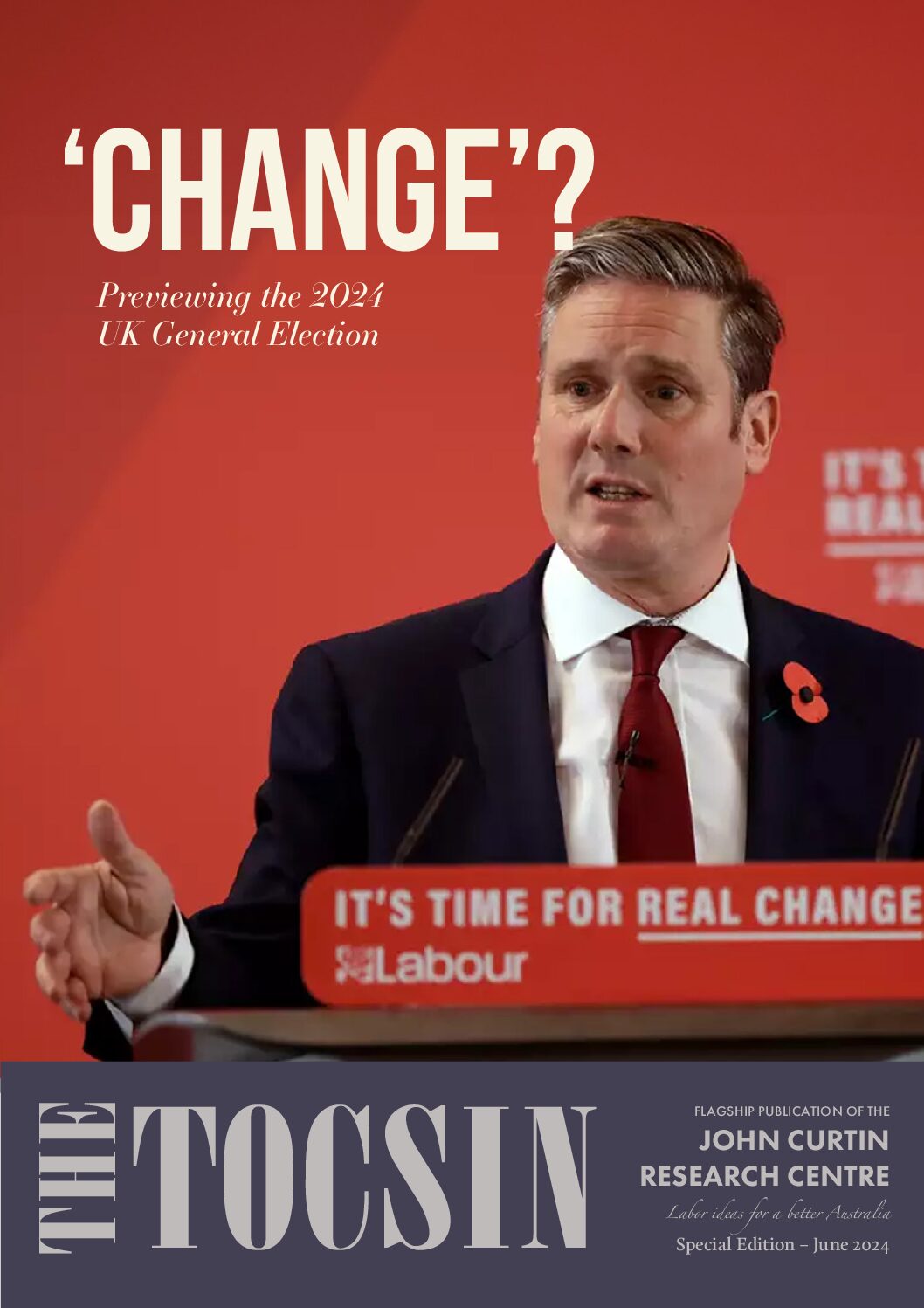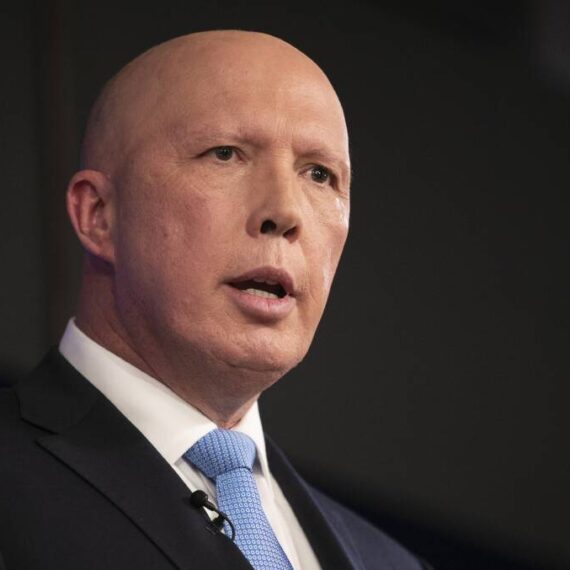Poverty policy in Australia has long been a contested concept in terms of the identification of causes and targeting of potential solutions. Too often, this debate has been polarised between those who view poverty as solely a matter of individual agency and responsibility (i.e. neoliberals), and those who argue that government and the community have an obligation to reform unfair social structures and systems that cause disadvantage (i.e. social democrats). The latter sentiment is arguably reflected in Prime Minister Anthony Albanese’s May 2022 election victory speech where he highlighted his belief in government responsibility to ensure t hat no Australians are ‘left behind because we should always look after the disadvantaged and the vulnerable’.
Australia has had three major inquiries into poverty over the past five decades. The 1972-75 Commission of Inquiry into Poverty (often called the Henderson Inquiry), which was established by the Coalition Prime Minister William McMahon but implemented by the Whitlam Labor government, arguably represented the high point of policy engagement with poverty concerns. That inquiry proposed a framework for measuring poverty based on a link to the minimum wage and incorporating housing costs which has influenced all subsequent research.
The First Main Report of the Commission published in September 1975 reported that 10.2 per cent of Australians were very poor and 7.7 per cent were rather poor. It framed poverty as the result of ‘structural inequality within society’ and urged ‘a redistribution of income and services to increase the capacity of poor people to exercise power thus enabling them to take an effective part in decision-making processes along with other sections of the community’.
Its policy recommendations targeted both increases in specific levels of income needed to alleviate poverty for individuals, and broader societal factors that could alternately create or prevent disadvantage. The first component influenced major raises to the unemployment allowance by the Labor Government from 1972-74 so that they achieved parity with pension rates. The second component referred to what has been called a structural approach whereby a range of social and economic structures and institutions such as housing, education, labour markets and location influence unequal life chances and opportunities. That approach informed its recommendation for the medium-term establishment of a universal basic income to replace the existing system of social security payments, which they calculated would cost $900 million to be funded by higher taxation on affluent sections of the community. The basic income was never introduced.
Over a decade later, Labor Prime Minister Bob Hawke promised that ‘By 1990 no Australian child will be living in poverty’. His pledge was influenced by a concern that one in five Australian children were estimated to be living in poor households, and provoked substantial reform measures via the 1987 Family Assistance Package including large increases in support payments for low income families whether in work or reliant on social security. These Labor initiatives significantly improved the incomes of low-income families, and reduced levels of child poverty.
In 2004, the Senate Community Affairs References Committee headed by the Opposition Labor Party (the Chair was the late Senator Steven Hutchins) conducted a major inquiry into Poverty and Financial Hardship which was estimated to afflict between 2 and 3.5 million Australians. The Committee proposed a range of reforms to tackle growing poverty and inequality including a national jobs strategy, enhanced minimum wage, and lifting the Newstart Allowance for the unemployed to the same rate as pension payments. However, the ruling Coalition government dismissed the inquiry findings, arguing that poverty was mainly caused by poor individual choices and behaviour (i.e. so-called welfare dependence) rather than by broader structural or systemic inequalities.
That individualistic view of poverty has informed the introduction of multiple manifestations of conditional welfare requiring members of disadvantaged groups to demonstrate behavioural changes in order to access payments or support services. They include mutual obligation requirements such as Work for the Dole, forms of compulsory income management such as the Basics Card and the recently abolished Cashless Debit Card, and the Parents Next program.
However, in contrast, the structural view of poverty as linked to wider societal unfairness, seems to be informing the current Senate Committee inquiry into the extent and nature of poverty in Australia. That inquiry, which is chaired by Greens Senator Janet Rice and includes Labor Party Senator Marielle Smith as Depute Chair, will report its findings in October 2023. To date, the inquiry has consulted widely, holding public hearings in seven separate locations. It seems evident from a reading of those hearings transcripts that a major increase in the Jobseeker rate will be one of the principal recommendations of the inquiry report.
In addition to official inquiries, poverty advocates have used the annual Anti-Poverty Week (APW) event as an effective forum for stimulating public and political debate and policy initiatives to reduce and preferably eliminate poverty. The most recent APW urged action to halve child poverty by 2030.
In a recent study of parliamentary debates on Anti-Poverty Week from 2012-21, a colleague and I summarised the framing of policy causes and solutions as follows. The Coalition adopted a neoliberal approach which attributed poverty to the limited skills and capacity of affected individuals and identified paid work as the only effective solution. The Greens presented a social rights perspective which linked poverty to wider manifestations of inequality and injustice and argued in favour of major increases in working-age social security payments. Labor adopted a social fairness framework which viewed poverty as associated with wider inequities. Their preferred solution was secure and fairly paid work, but they agreed with the Greens that an increase in social security payments was required. Notably, from 2017 onwards, all Labor parliamentary speeches recommended an increase in the NewStart/JobSeeker rate.
The Australian Council of Social Service (ACOSS) have been arguing for more than two decades for a major increase in the JobSeeker rate, both on the grounds that the low rate reinforces chronic poverty and disadvantage, and also that it excludes the long-term unemployed from opportunities for social and economic participation. ACOSS and other advocates have highlighted the growing gap between the JobSeeker rate and the pension rate; the increasing disparity between JobSeeker and the average wage; the increased gap between JobSeeker recipients and other low-income Australians; and the fact that JobSeeker is the 3rd lowest unemployment benefit replacement rate in the OECD.
To be sure, the JobSeeker cohort (totalling 843,390 as of March 2023) are not a homogenous population, and vary across age, gender, qualifications, prior work history, literacy, English language skills, location, family relationships and social connections. But, it has been highlighted that many have a disability or caring responsibility that limits their options for labour market engagement; many are women 45 years or older; and a large majority have been on the payment for longer than 12 months.
Two recent ACOSS reports emphasise the adverse impact of the low rate on the well-being of recipients. One report, based on a survey of 365 people reliant on JobSeeker and related payments, found evidence of major housing instability, problematic physical and mental health including in some cases suicidal behaviour associated with poor nutrition, social isolation and limited access to medication and health care, and low capacity to engage in paid work.
A further joint research report by ACOSS and the University of NSW found that households reliant on JobSeeker were living $269 per week below the poverty line, whereas those reliant on the lower Youth Allowance rate (for 16-21 year olds) were living $390 per week below the poverty line. An associated report by Anglicare Australian documented that only four rental properties across Australia were affordable for a single person reliant on JobSeeker, and none for a person on the lower Youth Allowance rate.
These research findings were duplicated by the report of the government’s own Interim Economic Inclusion Advisory Committee (IEIAC) chaired by former Labor Government Minister Jenny Macklin. The Committee found that the existing JobSeeker rate was inadequate via any reasonable comparison with other social security payments or average incomes and resulted in unfair adversity to claimants. Consequently, they proposed as the highest priority a ‘substantial increase’ to the JobSeeker rate of $256 a fortnight in order to lift the payment to 90 per cent of the age pension rate.
In April 2023, ACOSS coordinated an Open Letter addressed to the Labor Government urging a major increase in the JobSeeker rate (ACOSS’s preferred increase is from $50 a day to $76 a day). The letter highlighted the adverse circumstances of many recipients such as having to choose between paying rent or purchasing food or medicine and added that these afflictions had been worsened by the recent rise in prices for food and housing (termed the ‘cost of living crisis’). The letter was signed by a wide range of Members of Parliament (8 Labor, 1 Liberal, 12 Independents and 12 Greens), prominent former politicians and policy makers including an ex-Reserve Bank governor and ex-Treasury Secretary, economists, business and union leaders, First Nations leaders, academics, and other welfare policy advocates.
However, the recent federal budget only increased JobSeeker by less than $3 a day or $20 a week which is only 16 per cent of the increase recommended by the IEIAC, and unlikely to be sufficient to enable the long-term unemployed to access a decent level of food, housing and medication.
Barriers to policy reform
So why have consecutive governments both conservative and at times Labor ignored the overwhelming social and economic evidence in favour of a more adequate JobSeeker rate? There appears to be two principal barriers which have blocked proposals for badly needed policy reform.
The first is philosophical in that Labor as well as the Coalition have favoured paid work as the preferred strategy for social protection. For example, former Prime Minister Julia Gillard emphasised that Labor was ‘the Party of work not welfare’. She framed a binary distinction between the ‘working class’ whose lives in her opinion were characterized by ‘dignity’ and responsibility, and the ‘welfare class’ who she stereotyped as workshy and idle.
Yet the low JobSeeker rate is a direct barrier to seeking paid work in that it restricts their access to core needs such as good hygiene, new clothes and transport that are necessary to engage with the labour market. It may also exclude them from maintaining broader community and social relationships and connections that are often advantageous to securing employment.
The second is the monetary cost given Treasury estimate a sizeable increase would cost $6 billion per year. But this argument is contentious for two reasons. Firstly the forms of government spending and indeed revenue raising adopted are a political choice. The Grattan Institute has identified numerous measures on both sides of that net that could arguably restore budgetary balance. Secondly, that estimate ignores the cost of not increasing the rate. One item is the cost to NGOs of providing emergency relief goods and services to those that cannot afford their core needs. For example, a recent ACOSS study found an enormous rise in demand for support services provided by the non-government welfare sector.
The second cost is the resulting demand on crisis intervention services in the areas of housing, mental health, family violence, and crime/criminal justice. Those costs are likely to be prohibitive. Given the government’s stated emphasis on a broader measurement of community well-being that includes social and environmental as well as conventional economic indicators, it is recommended that any future costing of JobSeeker rate increases should involve a cost benefit analysis that outweighs those outlays against the almost certainly higher social and economic costs of not undertaking policy reform.
What should be done and why?
After three decades of neo-liberal hegemony, Labor has an opportunity to regain control of the welfare state policy agenda, and to reframe that agenda from targeting the negative stigmatisation of disadvantaged individuals to instead resolving the root causes of long-term financial deprivation. The most important step is to tackle the major cause of long-term social exclusion in Australia: the inadequate rate of JobSeeker payment. An additional substantial increase in that rate would be consistent with the actions of past Labor governments (both Whitlam and Hawke/Keating) to lift the relative rate, and conversant with the findings of major poverty inquiries and research evidence over five decades. Labor could signal their long-term progressive reform intentions in this area by appointing at least two lived experience representatives (i.e. persons currently reliant on Social Security payments) in a paid peer workforce capacity to the IEIAC so that further deliberations on the JobSeeker rate are directly informed by the real needs and challenges of those living in poverty.





